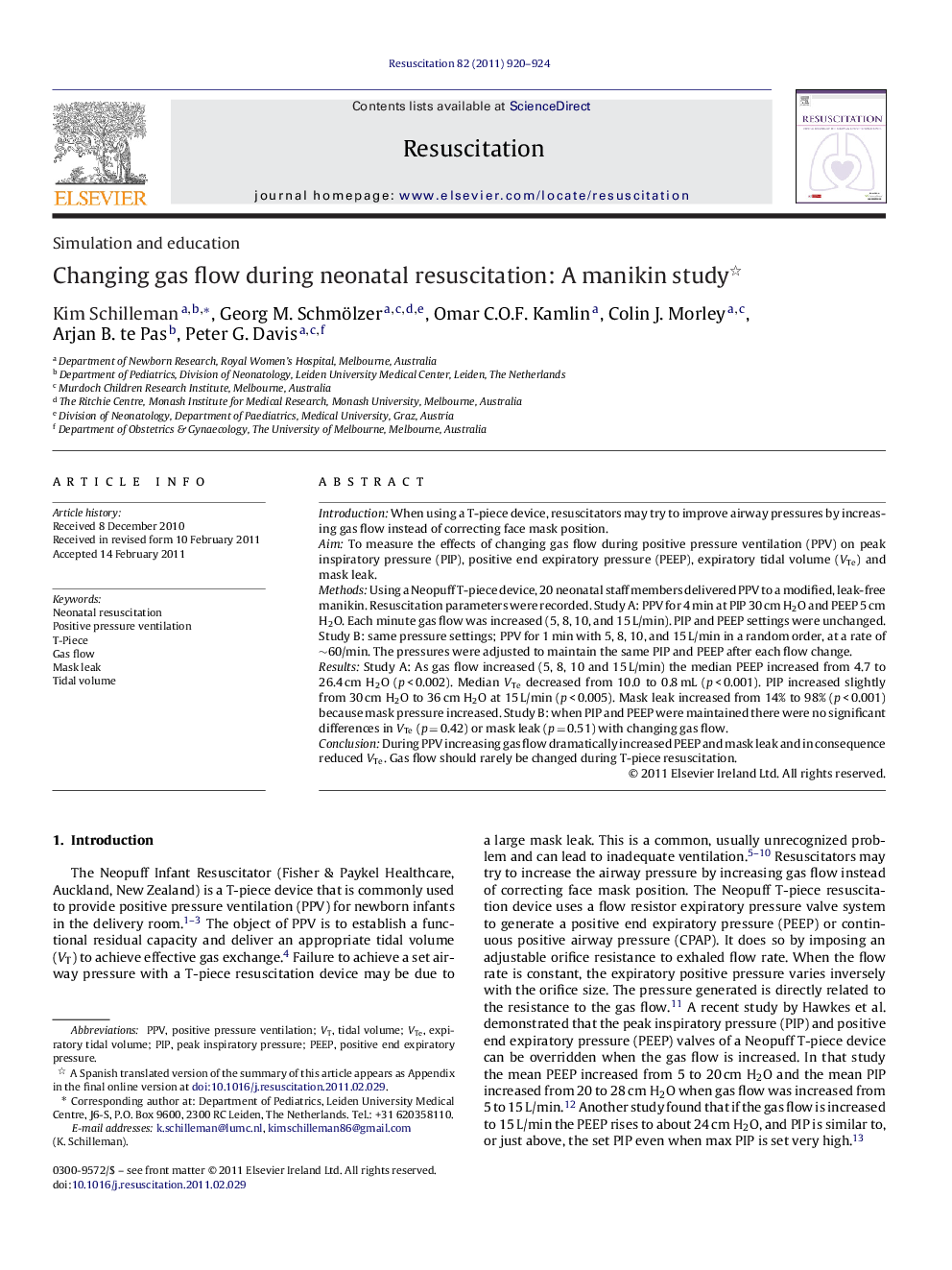| کد مقاله | کد نشریه | سال انتشار | مقاله انگلیسی | نسخه تمام متن |
|---|---|---|---|---|
| 5999273 | 1181478 | 2011 | 5 صفحه PDF | دانلود رایگان |

IntroductionWhen using a T-piece device, resuscitators may try to improve airway pressures by increasing gas flow instead of correcting face mask position.AimTo measure the effects of changing gas flow during positive pressure ventilation (PPV) on peak inspiratory pressure (PIP), positive end expiratory pressure (PEEP), expiratory tidal volume (VTe) and mask leak.MethodsUsing a Neopuff T-piece device, 20 neonatal staff members delivered PPV to a modified, leak-free manikin. Resuscitation parameters were recorded. Study A: PPV for 4 min at PIP 30 cm H2O and PEEP 5 cm H2O. Each minute gas flow was increased (5, 8, 10, and 15 L/min). PIP and PEEP settings were unchanged. Study B: same pressure settings; PPV for 1 min with 5, 8, 10, and 15 L/min in a random order, at a rate of â¼60/min. The pressures were adjusted to maintain the same PIP and PEEP after each flow change.ResultsStudy A: As gas flow increased (5, 8, 10 and 15 L/min) the median PEEP increased from 4.7 to 26.4 cm H2O (p < 0.002). Median VTe decreased from 10.0 to 0.8 mL (p < 0.001). PIP increased slightly from 30 cm H2O to 36 cm H2O at 15 L/min (p < 0.005). Mask leak increased from 14% to 98% (p < 0.001) because mask pressure increased. Study B: when PIP and PEEP were maintained there were no significant differences in VTe (p = 0.42) or mask leak (p = 0.51) with changing gas flow.ConclusionDuring PPV increasing gas flow dramatically increased PEEP and mask leak and in consequence reduced VTe. Gas flow should rarely be changed during T-piece resuscitation.
Journal: Resuscitation - Volume 82, Issue 7, July 2011, Pages 920-924